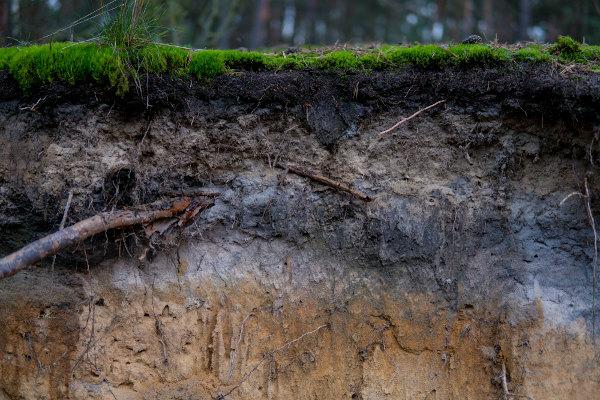You foot bones are fundamental to ensure that the feet perform their function of promoting locomotion, balance and support of the body. In total, each foot has 26 bones, which are divided into seven tarsal bones, five metatarsal bones and 14 phalanges, with three phalanges per finger, with the exception of the hallux (the big toe).
Talus, calcaneus, navicular, cuboid, medial cuneiform, intermediate cuneiform and lateral cuneiform are the names of the tarsal bones. The metatarsal bones, in turn, are named according to their position, being numbered from one to five. There are 33 joints in the feet, and they are grouped into four sets: intertarsal, tarsometatarsal, metatarsophalangeal, and interphalangeal.
Read too: What are the bones of the hand?
Topics of this article
- 1 - Summary of foot bones
- 2 - How many and which are the bones of the foot?
-
3 - Names and functions of the bones of the foot
- Tarsal bones or tarsal bones
- Metatarsal bones or metatarsal bones
- Phalanges
- 4 - Joints of the bones of the foot
Foot bones summary
Each foot has 26 bones.
Talus, calcaneus, navicular, cuboid, medial cuneiform, intermediate cuneiform, and lateral cuneiform are tarsal bones.
There are five metatarsal bones that are named according to their position.
In total there are 14 phalanges, three per finger, with the exception of the hallux, which has two.
At the foot there are 33 joints.
Do not stop now... There's more after the publicity ;)
How many and what are the bones of the foot?
On each of our feet there are 26 bones, which can be classified into three groups: tarsal bones, metatarsals and the phalansges. These bones are fundamental so that the feet can guarantee the support of our body, balance and locomotion.

Names and functions of the bones in the foot

Tarsal bones or tarsal bones
The tarsal bones are short but irregular bones. It's sevenyou tarsal bones: talus, calcaneus, navicular, cuboid, medial cuneiform, intermediate cuneiform and lateral cuneiform. The talus and calcaneus are arranged in the proximal row, while the navicular, cuboid, medial cuneiform, intermediate cuneiform, and lateral cuneiform are in the distal row.
Among the tarsal bones, we must highlight the function of the talus, which is the only tarsal bone that articulates with the bones of the leg, ensuring that body weight is received and transferred to the bone calcaneus. The calcaneus is the largest bone among the tarsal bones., being responsible for forming the heel.
In the metatarsal group we have a total of five long bones, which are responsible for forming the median region of the feet, connecting the tarsus and the phalanges. The first metatarsal is the largest of all and is related to body support. The metatarsal bones are numbered from one to five.
Phalanges
“Phalanges” is the name given to the long bones that form the toes. Each finger is made up of three phalanges. (proximal, middle and distal phalanx), with the exception of the hallux, which only has a proximal and distal phalanx.
See too:Human Skeleton—How the 206 Bones in Our Body Are Divided
Joints of the bones of the foot

The foot has 26 bones and 33 joints, which stand out because they are all of the synovial type. Foot joints can be classified into four types:
Intertarsals: are the joints present between the tarsal bones.
Tarsometatarsal: are the joints present between the tarsal bones and the metatarsal bones.
Metatarsophalangeal: are the joints present between the metatarsal bones and the phalanges.
Interphalangeal: are the joints present between the phalanges.
By Vanessa Sardinha dos Santos
Biology teacher
Would you like to reference this text in a school or academic work? Look:
SANTOS, Vanessa Sardinha dos. "Foot bones"; Brazil School. Available in: https://brasilescola.uol.com.br/biologia/ossos-do-pe.htm. Accessed on July 6, 2023.
Learn more about joints and learn to differentiate their types.
Click here and find out more about the spine. In this text we will talk about its structure, curvatures and diseases that affect this structure.
Learn the names of the main bones of the human skeleton, how many bones there are in our body and what are their functions.
Click here and find out which are the bones of the hand. Know the 27 bones that make up this structure, the name of each one of them and their joints.
Know the locomotor system and learn how man manages to carry out locomotion.
Find out more about the skeletal system by clicking here! In this text we will talk about bones, their types, division of the skeleton and joints.
Cringe
The slang adapted from English is used to designate someone who is seen as tacky, shameful, outdated and out of fashion.
Neurodiversity
A term coined by Judy Singer, it is used to describe the wide variety of ways the human mind behaves.
PL of Fake News
Also known as PL2660, it is a bill that establishes mechanisms for the regulation of social networks in Brazil.
Click here and learn all about the Victorian Era, Queen Victoria's reign period, in...


